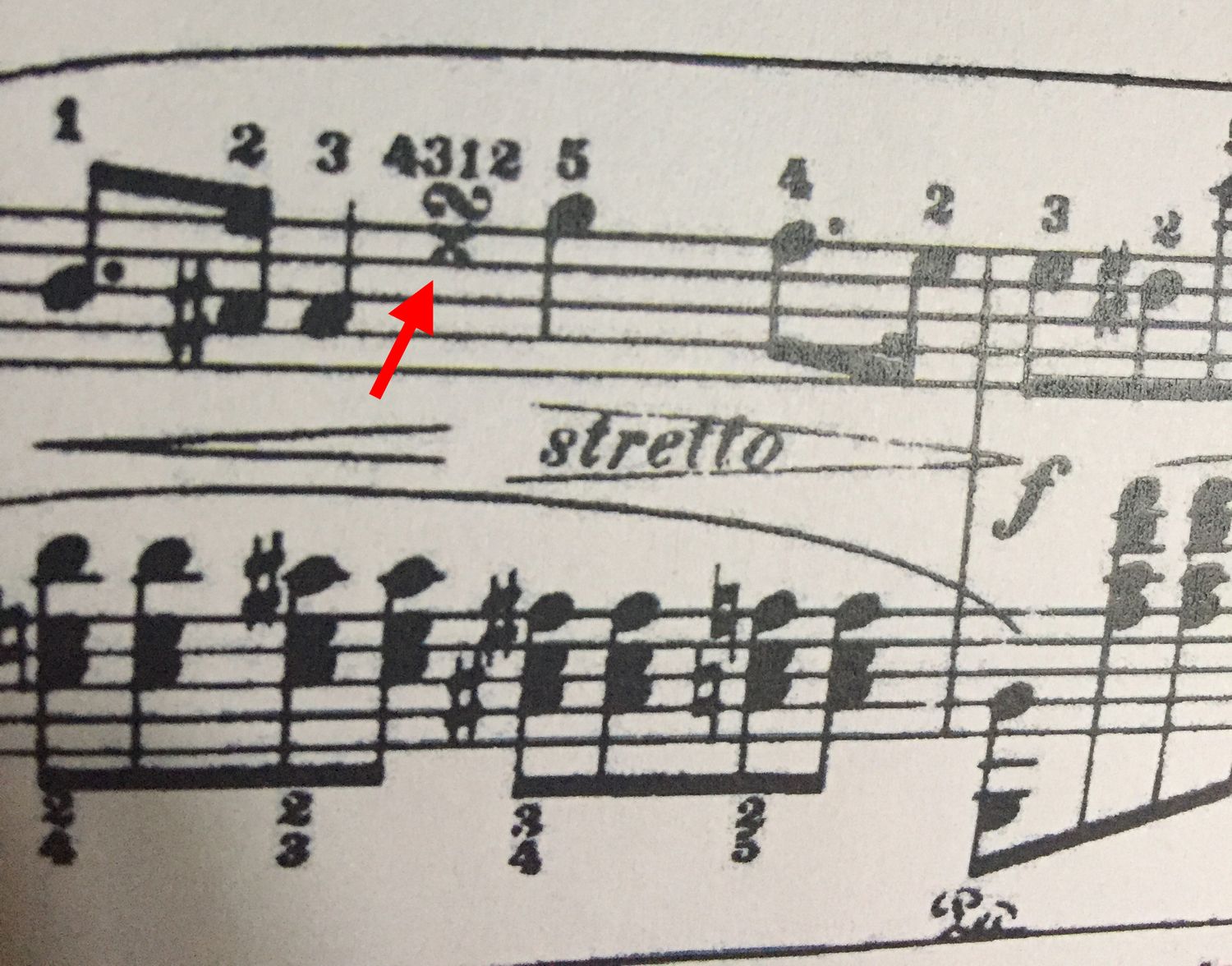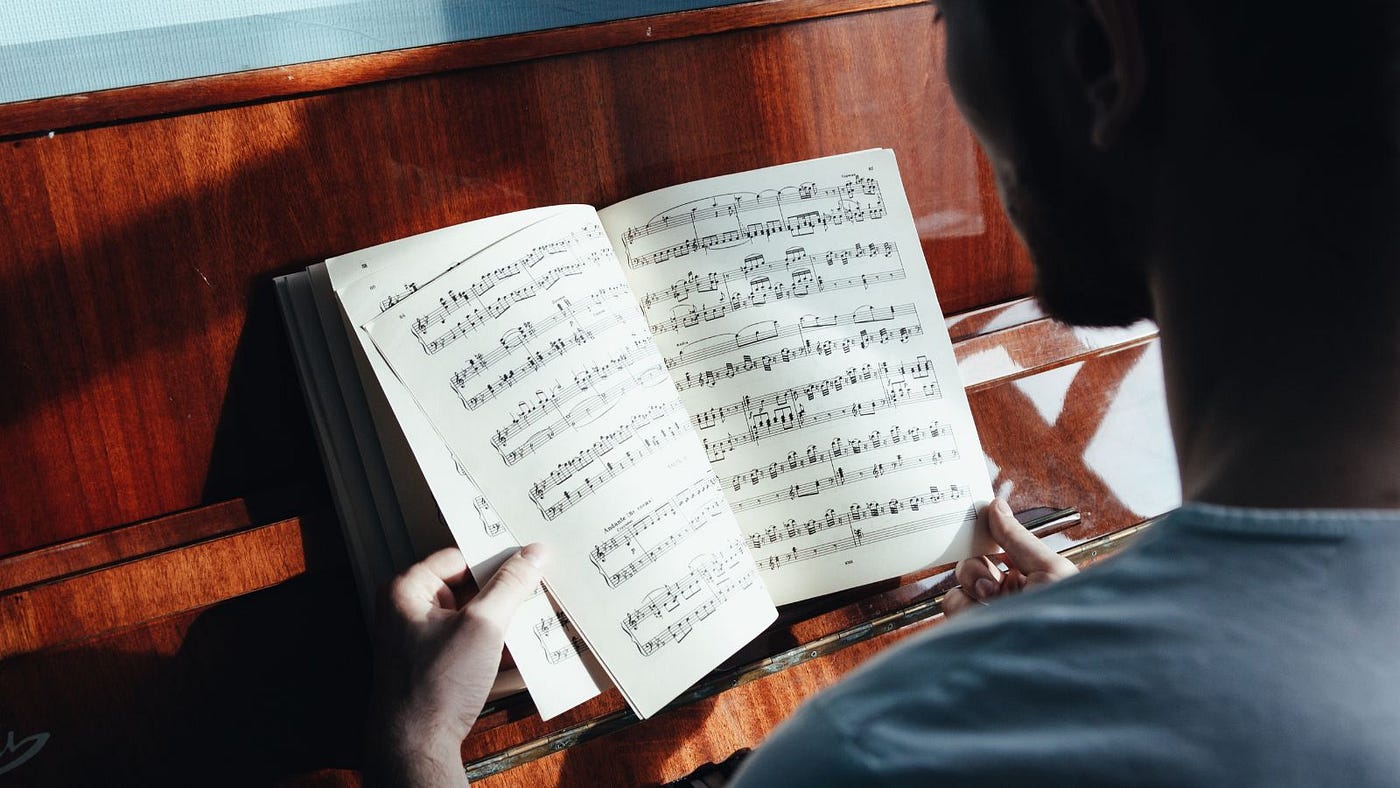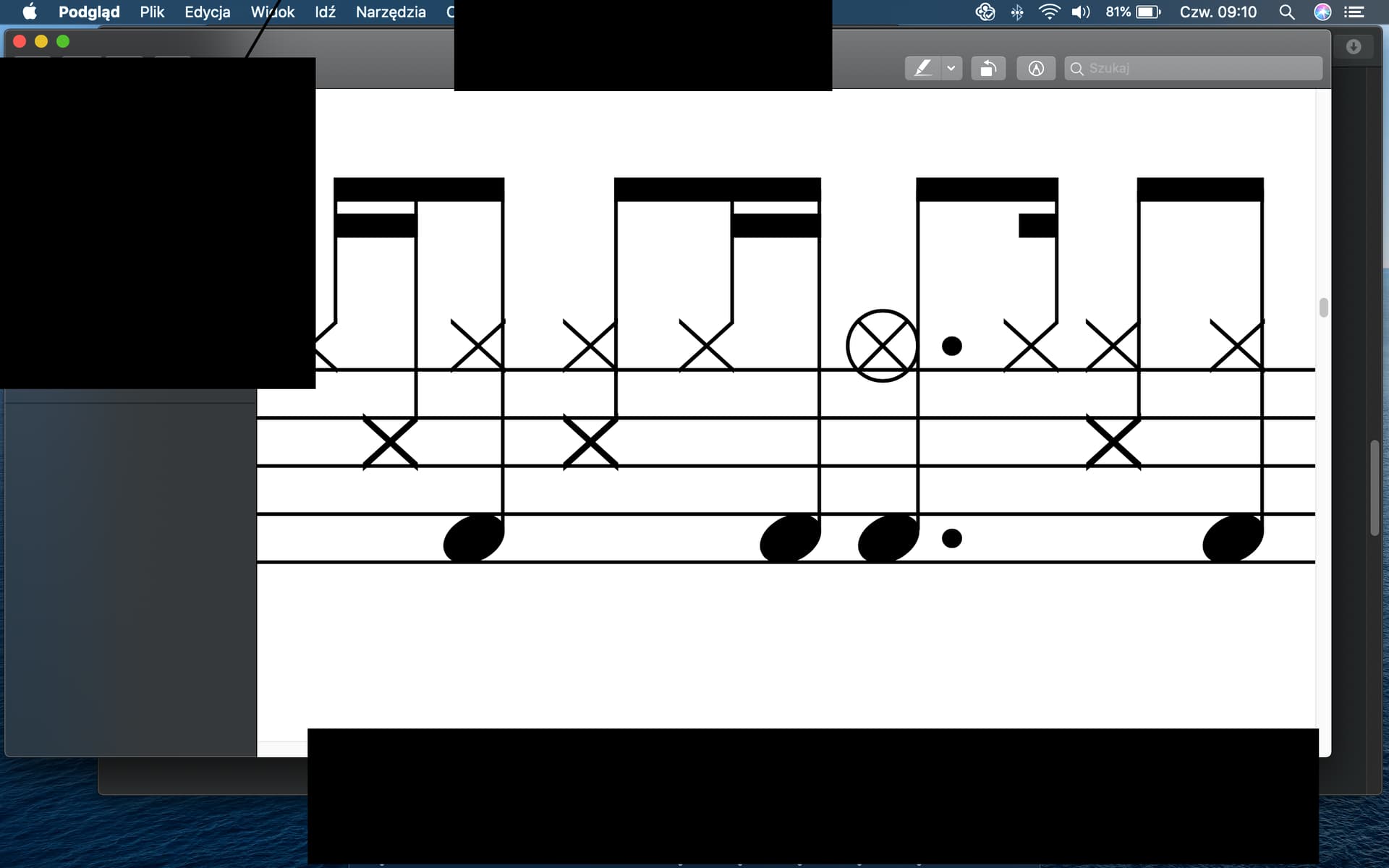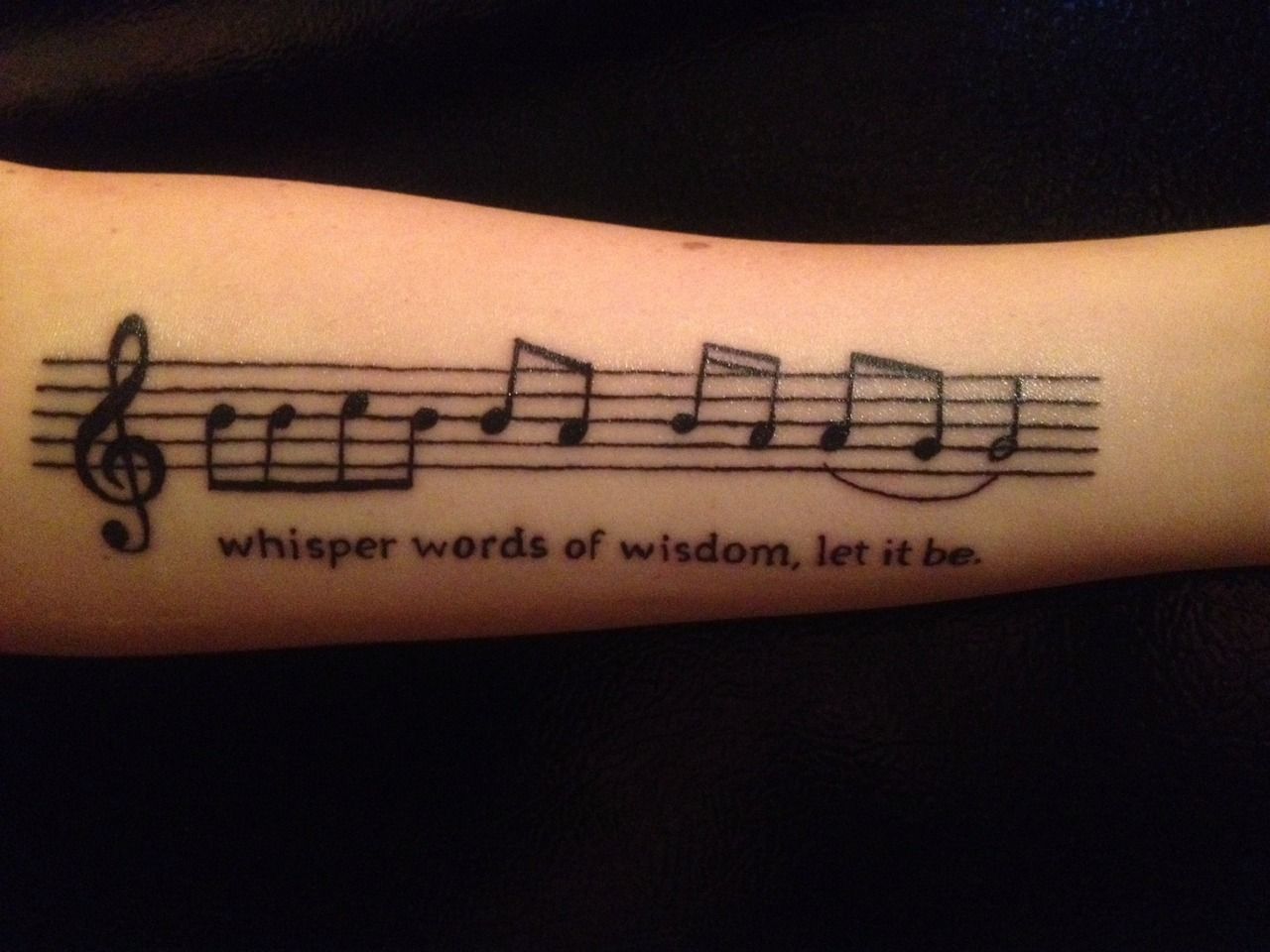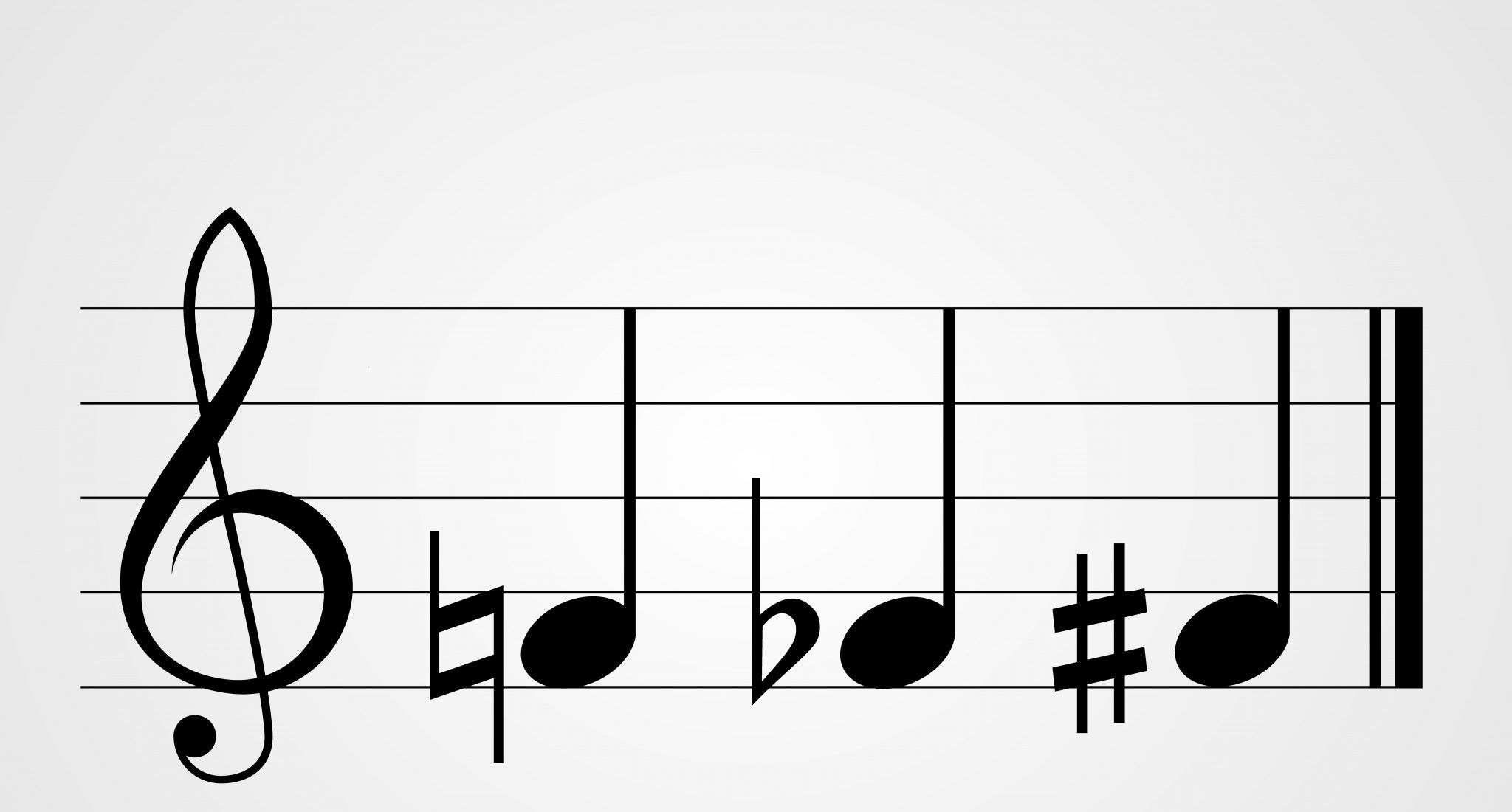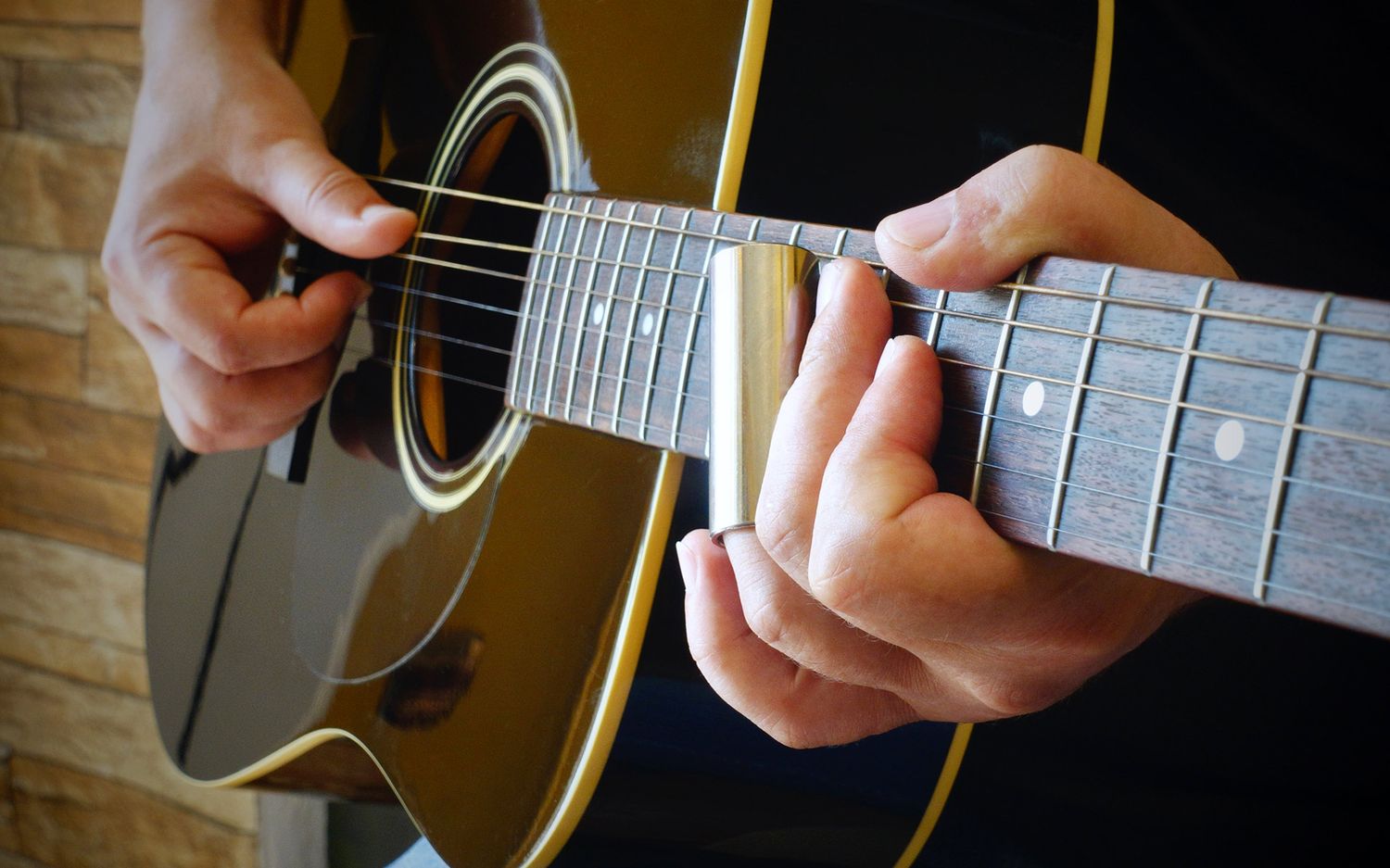Home>Production & Technology>Tempo>What Does Tempo Mean In Music


Tempo
What Does Tempo Mean In Music
Modified: January 22, 2024
Discover the meaning of tempo in music and how it influences the rhythm and overall feel of a composition. Explore the importance of controlling tempo for creating impactful melodies and harmonies.
(Many of the links in this article redirect to a specific reviewed product. Your purchase of these products through affiliate links helps to generate commission for AudioLover.com, at no extra cost. Learn more)
Table of Contents
Introduction
In the world of music, tempo plays a vital role in shaping the mood, energy, and overall interpretation of a piece. Whether it’s a fast-paced dance track that gets your heart racing or a slow, melodic ballad that tugs at your heartstrings, the tempo of a composition sets the pace and rhythm that guides musicians and captivates listeners.
Tempo, derived from the Latin word “tempus” meaning “time,” refers to the speed or rate at which a piece of music is performed. It dictates the speed of the underlying beat, the duration of notes, and the overall flow of the music. Understanding and effectively utilizing tempo can make or break a musical performance, as it significantly impacts the emotional impact and listener engagement.
Within the realm of music, tempo is measured in beats per minute (BPM). A higher BPM indicates a faster tempo, while a lower BPM signifies a slower tempo. The tempo of a piece can be indicated by specific terms or tempo markings within the sheet music, such as “Allegro” for a quick and lively tempo or “Adagio” for a slow and leisurely tempo.
Tempo serves as a fundamental element in music composition, helping to convey the intended mood, expression, and energy of a piece. It sets the pace for musicians, enabling them to synchronize their movements, timing, and dynamics. Moreover, tempo creates a foundation for other elements of music, such as rhythm, melody, and harmonies, to seamlessly come together and create a cohesive musical experience.
Throughout this article, we will explore the various types of tempo, common tempo terminology, the importance of tempo in music performance, techniques for maintaining tempo, and how tempo impacts the interpretation of music. By delving deeper into the world of tempo, we will gain a greater appreciation for this essential element and its influence on the world of music.
Definition of Tempo
Tempo is a crucial aspect of music that refers to the speed or rate at which a piece of music is performed. It determines the pacing, rhythm, and overall feel of a composition. In simple terms, it is the heartbeat of a musical piece, setting the tempo at which musicians and listeners navigate the musical journey.
Tempo is typically measured in beats per minute (BPM), indicating the number of beats or pulses that occur within one minute. A higher BPM means a faster tempo, while a lower BPM suggests a slower tempo. The tempo of a piece is usually indicated at the beginning of the sheet music, providing a guide to musicians on how to perform the piece.
Tempo not only affects the speed but also influences the perceived emotion and energy of a musical performance. A lively and energetic piece may have a fast tempo, evoking excitement and movement, while a slow tempo can convey a sense of calmness, introspection, or melancholy.
It is important to note that tempo is a relative concept and can vary depending on the style, genre, and context of the music. Different musical genres have their own typical tempo ranges, and even within a genre, tempos can differ significantly between songs.
Tempo is not limited to a single consistent speed throughout a piece of music. Composers often utilize tempo changes, called tempo markings or tempo variations, as a way to shape the piece’s structure and dynamics. These variations can be sudden or gradual, adding depth and complexity to the composition.
Overall, tempo is a fundamental element of music that brings life and movement to a piece. It sets the rhythm, pace, and mood, guiding both the performers and the listeners on an emotional journey through the power of sound.
Role of Tempo in Music
Tempo plays a significant role in music, serving as a vital component that helps to convey the intended emotion, energy, and overall interpretation of a composition. It is a powerful tool that composers and musicians use to shape the musical experience and engage the listeners. Here are some key roles that tempo plays in music:
- Setting the Mood: Tempo has the ability to instantly establish the mood and atmosphere of a musical piece. A fast tempo can create a sense of excitement, energy, and urgency, while a slower tempo can evoke tranquility, melancholy, or introspection. By adjusting the tempo, musicians can effectively communicate the desired emotional tone to the audience.
- Enhancing Expressiveness: Tempo allows musicians to express themselves and infuse their own interpretation into the music. By manipulating the speed at which the music is played, performers can add nuances, dynamics, and phrasing that evoke specific emotions. A skilled musician knows how to use tempo to bring out the desired levels of intensity, tension, or sensitivity in a piece.
- Guiding the Musical Flow: Tempo acts as a guiding force for both performers and listeners, providing a sense of structure and coherence. It sets the pace and rhythm of a composition, enabling musicians to stay synchronized and maintain a cohesive performance. It also helps listeners anticipate the timing of different musical elements, leading to a more engaging and enjoyable musical experience.
- Creating Contrast and Variety: Tempo variations within a piece can create contrast and add interest to the music. Alternating between fast and slow tempos can create a sense of tension and release, adding depth and complexity to the composition. These tempo changes can highlight different musical sections, emphasize certain melodic or rhythmic patterns, and keep the listeners engaged throughout the performance.
- Influencing Dance and Movement: Tempo has a direct impact on dance and movement, as it provides the rhythmic framework for choreography. Different tempos are associated with specific dance styles and genres, and dancers utilize the tempo to synchronize their movements and showcase the expressive qualities of the music. Whether it’s a lively and energetic tempo for a fast-paced dance or a slower tempo for a graceful and lyrical performance, tempo sets the foundation for the physical expression of music.
Overall, tempo is a crucial element in music that goes beyond just the speed of a composition. It serves as a powerful tool for composers and musicians to evoke emotions, guide the musical flow, create variety, and enhance expressiveness. Understanding the role of tempo allows performers and listeners to fully appreciate and engage with the music on a deeper level.
Types of Tempo
Tempo can vary greatly across different musical compositions, genres, and styles. Understanding the various types of tempo is essential to interpreting and performing music accurately. Here are some common types of tempo:
- Grave: This tempo marking indicates an extremely slow and solemn tempo, often associated with funeral marches or deeply emotional compositions. It is the slowest tempo designation.
- Largo: Largo denotes a slow and broad tempo. It is slower than Adagio and is often used in expressive and poignant pieces that require a sense of introspection.
- Adagio: Adagio represents a slow tempo, indicating a leisurely and calm pace. It is slower than Andante but faster than Largo. Adagio is often used in romantic and lyrical compositions.
- Andante: Andante describes a moderate, walking pace tempo. It is a comfortable and flowing tempo that is neither too fast nor too slow. Andante is commonly found in classical and romantic music.
- Allegro: Allegro is a fast and lively tempo. It signifies a brisk and energetic pace that is often associated with excitement and joy. Allegro is frequently encountered in classical and baroque compositions.
- Presto: Presto is a very fast tempo, often considered as one of the fastest tempo markings. It conveys a sense of urgency, exhilaration, and virtuosity. Presto is commonly used in various musical genres, including classical, jazz, and rock.
- Accelerando: Accelerando indicates a gradual increase in tempo, often represented by the abbreviation “accel.” It directs the performer to gradually play faster, creating a sense of building energy and excitement.
- Ritardando: Ritardando, often abbreviated as “rit.,” signifies a gradual decrease in tempo. It instructs the musician to slow down gradually, adding a sense of relaxation or anticipation to the music.
These tempo markings provide a general guide for musicians to understand the desired speed and character of a composition. However, it is important to note that the interpretation of tempo can vary depending on the musical context, style, and personal artistic decisions of the performer.
By being familiar with the different types of tempo and their associated characteristics, musicians can effectively communicate the intended mood, energy, and expression of a piece, ensuring a compelling and engaging musical performance.
Common Tempo Terminology
Tempo terminology encompasses various markings and expressions used to indicate the desired speed and character of a musical piece. These terms provide valuable guidance to musicians, helping them understand the intended tempo and perform the composition accurately. Here are some common tempo terminologies:
- Allegro: Allegro translates to “quickly” or “lively” in Italian. It signifies a fast and lively tempo, often associated with spirited and energetic compositions.
- Adagio: Adagio means “slow” in Italian. It represents a slow tempo, typically used in expressive and solemn pieces that require a sense of contemplation and depth.
- Andante: Andante translates to “at a walking pace” in Italian. It indicates a moderately slow tempo that resembles a comfortable and flowing walking speed.
- Vivace: Vivace means “lively” or “vibrant” in Italian. It denotes a fast and spirited tempo, often characterized by a sense of liveliness and joy.
- Presto: Presto translates to “quick” or “fast” in Italian. It is the fastest tempo marking, representing a rapid and energetic pace.
- Largo: Largo means “broad” or “wide” in Italian. It indicates a very slow tempo, often associated with majestic and dramatic compositions.
- Moderato: Moderato means “moderate” in Italian. It suggests a moderate tempo, neither too fast nor too slow. Moderato is common in many classical compositions.
- Rubato: Rubato is an Italian term that means “stolen time.” It refers to the flexible and expressive manipulation of tempo, allowing the performer to freely speed up or slow down certain passages for artistic interpretation.
These tempo terminologies provide a concise and standardized way to communicate tempo in music. They guide musicians in understanding the overall character of a piece and help ensure a cohesive and unified performance.
It’s important to note that tempo markings can sometimes be subjective, and their interpretation may vary depending on the style, era, and context of the music. Musicians rely on their understanding of the genre and the composer’s intentions to strike the right balance and deliver a compelling musical experience.
Importance of Tempo in Music Performance
Tempo is a critical element in music performance, as it directly impacts the overall interpretation, mood, and communication of a musical piece. Here are some key reasons why tempo is essential in music performance:
- Expressiveness: Tempo allows musicians to convey the intended emotions and artistic expression of a composition. By choosing the appropriate tempo, performers can evoke specific feelings such as excitement, serenity, sadness, or urgency. It provides a foundation for musicians to bring their own interpretation and personal touch to the music.
- Coherence and Unity: Tempo serves as a unifying force for musicians performing together. It allows instrumentalists and vocalists to synchronize their movements, timing, and dynamics. With a consistent tempo, musicians can create a cohesive and unified performance, ensuring that each part of the ensemble works together harmoniously.
- Dynamic Contrast: Tempo variations within a piece can create contrast and add interest to the music. By carefully adjusting the tempo, performers can highlight different musical elements, create tension and release, and engage the listeners through dynamic changes. These fluctuations in tempo can significantly contribute to the overall musical narrative and captivate the audience.
- Communication with the Audience: Tempo acts as a conduit for connecting performers with their audience. The chosen tempo can influence the audience’s emotional response and engagement with the music. Whether it’s a fast tempo that energizes and excites the listeners or a slow tempo that evokes introspection and tranquility, tempo helps establish a direct connection between performers and their audience.
- Rhythmic Accuracy: Tempo is essential for maintaining rhythmic accuracy in music. The consistent pace provided by tempo allows musicians to coordinate their rhythmic patterns, syncopations, and complex passages effectively. It ensures that all performers stay in sync, resulting in a precise and synchronized performance.
- Interpretation: Tempo choices often reflect the performer’s personal interpretation and understanding of the music. By selecting an appropriate tempo, musicians can emphasize certain melodic or rhythmic elements, highlight the musical structure, and convey their artistic vision. Tempo decisions are crucial in creating a unique and memorable performance.
Ultimately, tempo plays a vital role in music performance, shaping the emotional impact, dynamics, and cohesiveness of a piece. By carefully considering and executing the appropriate tempo, musicians can deliver a compelling and memorable musical experience that resonates with both performers and listeners.
Tempo Markings in Sheet Music
In sheet music, composers provide specific tempo markings to indicate the desired speed and character of a musical piece. Tempo markings serve as invaluable guides for musicians, ensuring a consistent and accurate performance. Here are some common tempo markings found in sheet music:
- Allegro: Allegro signifies a fast and lively tempo. It is often written as “Allegro” or abbreviated as “Allegro con brio” (with vigor) to indicate a particularly spirited interpretation.
- Andante: Andante denotes a moderately slow tempo, usually translated as “at a walking pace.” It suggests a comfortable and flowing speed, neither too fast nor too slow.
- Adagio: Adagio represents a slow tempo, often translated as “at ease” or “slowly.” It indicates a leisurely and calm pace, creating a sense of emotional depth and expression.
- Presto: Presto indicates a very fast tempo, usually translated as “quickly” or “rapidly.” It suggests a fast and lively pace that requires technical agility and precision.
- Largo: Largo signifies an extremely slow tempo, often translated as “broad” or “wide.” It conveys a solemn and majestic character, providing ample time for expressive melodic lines and deep emotional impact.
- Moderato: Moderato denotes a moderate tempo, translated as “moderately” or “with moderation.” It suggests a balanced and measured speed that lies between slow and fast.
- Andantino: Andantino is a slightly faster tempo than Andante, often translated as “a little faster.” It conveys a sense of slightly increased energy and movement compared to Andante.
- Rubato: Rubato is an expressive indication that allows for flexibility in tempo. It suggests a temporary and controlled deviation from strict timekeeping, allowing the performer to freely express themselves by stretching and contracting the rhythm for dramatic effect.
These tempo markings provide precise instructions to musicians on how to interpret and perform the music. They help establish musical expectations, guide the pacing and emotion of the piece, and enable performers to achieve a consistent and cohesive performance.
It is important for musicians to pay close attention to tempo markings in sheet music and interpret them in conjunction with other musical indications, such as dynamics and expression markings. By carefully following the composer’s intentions, musicians can bring out the intended character and emotion of the music, resulting in a compelling and authentic performance.
Techniques for Maintaining Tempo
Maintaining a consistent tempo is crucial for a cohesive and polished musical performance. Here are some common techniques that musicians use to stay in sync and preserve the desired tempo:
- Metronome: A metronome is a device that produces a steady and precise beat at a specified tempo. Musicians can use a metronome during rehearsals and practice sessions to develop a strong sense of timing and to ensure their performance aligns with the intended tempo.
- Internalize the Beat: Developing a strong internal sense of time and rhythm is vital for maintaining tempo. Musicians train themselves to feel the beat and keep it steady within their mind and body, allowing them to stay synchronized even in the absence of an external rhythm reference.
- Counting: Counting helps musicians stay aware of the underlying rhythm and maintain a steady tempo. Whether it’s counting beats, measures, or subdivisions, verbally or mentally counting can provide a reliable framework for staying on track with the designated tempo.
- Listening: Actively listening to the ensemble or accompaniment is essential for maintaining tempo in group performances. By attentively listening to the rhythm and timing of fellow musicians, performers can adjust their playing to ensure a synchronized and cohesive performance.
- Practice with a Click Track: Click tracks are recorded tracks that produce an audible metronomic beat throughout a performance. Musicians can rehearse with a click track to build their ability to play in time and maintain a consistent tempo, particularly in studio recordings or live performances with pre-recorded materials.
- Subdivide: Subdividing involves mentally dividing each beat into smaller, equal parts. This technique helps musicians stay focused on the pulse and maintain a steady tempo, especially in complex rhythms or passages where precision is crucial.
- Use Physical Cues: Physical cues, such as conducting gestures or body movements, can help communicate and reinforce the desired tempo among musicians in an ensemble. Conductors play a vital role in guiding the tempo and ensuring everyone remains synchronized and together throughout the performance.
- Be Mindful of Tempo Fluctuations: While it is essential to maintain a steady tempo, there are instances where tempo fluctuations are intentional. Musicians should be aware of any tempo changes indicated in the music and be prepared to adapt accordingly, whether it’s a gradual accelerando or a sudden ritardando.
By incorporating these techniques into their practice routine and performances, musicians can enhance their ability to maintain tempo and deliver a cohesive and polished musical experience. Consistency in tempo not only contributes to a solid performance but also allows for unified creativity and interpretation among ensemble members.
Tempo’s Impact on Music Interpretation
Tempo is a crucial element that significantly impacts the interpretation and overall musical experience. The chosen tempo influences the mood, emotion, and expressive qualities of a composition, allowing musicians to shape and communicate their artistic vision. Here are some ways in which tempo affects music interpretation:
- Emotional Impact: The tempo of a piece has a direct influence on the emotional response it evokes. A fast tempo can create a sense of excitement, energy, or even tension, while a slow tempo can convey melancholy, calmness, or introspection. By selecting a specific tempo, musicians can tap into the emotional content of a composition and guide the listener towards a particular mood or feeling.
- Artistic Expression: Tempo allows musicians to express their creativity and interpretation of a composition. By choosing a tempo, performers can emphasize certain musical elements, shape phrases, and add nuances to enhance the overall expressiveness of the piece. A well-considered tempo can reveal the performer’s artistic intentions and provide a unique perspective on the music.
- Character and Style: Tempo plays a vital role in defining the character and style of a piece. Different musical genres and styles have their typical tempo ranges. For example, a brisk and lively tempo might be associated with a classical allegro, while a slow tempo could evoke a sense of blues or jazz ballad. By adhering to the appropriate tempo conventions, musicians align their interpretation with the genre and facilitate a coherent musical experience.
- Rhythm and Phrasing: Tempo directly affects the perception and execution of rhythmic patterns and phrasing in a composition. A faster tempo requires precise execution of rapid passages, while a slower tempo provides more opportunity for expressive phrasing and intricate rhythmic subdivisions. Musicians need to adapt their technique and attention to detail according to the chosen tempo to maintain a sense of clarity and coherence in the music.
- Dramatic Effect: Tempo variations or changes within a composition can create dramatic and impactful moments. A sudden acceleration in tempo can convey a sense of urgency or excitement, while a gradual decrease in tempo might signify a calming or reflective moment. These tempo changes allow musicians to highlight specific sections of a piece and add tension, contrast, or resolution to the musical narrative.
- Dance and Movement: Tempo is closely linked to dance and movement in music. Different tempos are associated with specific dance styles, and musicians need to adapt their tempo to synchronize with dancers. By adjusting the tempo, musicians can support and enhance the physical expression of the dance, creating a seamless and engaging collaboration between music and movement.
Tempo is a powerful tool in the interpretation of music, enabling musicians to shape the listener’s experience, express their artistic vision, and bring out the inherent emotional qualities of a composition. Understanding the impact of tempo on interpretation allows musicians to make informed choices and deliver a compelling and evocative performance.
Conclusion
Tempo holds immense importance in the world of music as it shapes the pace, mood, and overall interpretation of a musical piece. Whether it’s a lively and energetic tempo or a slow and contemplative one, tempo sets the foundation for emotional expression, rhythmic precision, and artistic interpretation.
Understanding the various types of tempo and common tempo terminology provides musicians with the necessary tools to accurately interpret and perform a composition. Tempo markings in sheet music act as guides, enabling musicians to align their performance with the composer’s intentions and create a unified and cohesive musical experience.
Keeping a consistent tempo requires techniques such as internalizing the beat, using metronomes, counting, and listening. These methods ensure that musicians stay synchronized and deliver a polished performance. Additionally, tempo variations within a piece allow for dynamic contrast, dramatic effect, and stylistic expression.
The chosen tempo significantly influences the emotional impact, artistic expression, and overall interpretation of a musical piece. It sets the mood, guides expression, and affects the perception of rhythm and phrasing. Tempo also plays a crucial role in dance and movement, synchronizing music with physical expression and enhancing collaborative performances.
In conclusion, tempo is a fundamental aspect of music that underlies the emotional depth, rhythmic precision, and artistic interpretation of a composition. By understanding the role of tempo, musicians can create engaging performances that captivate audiences and evoke the intended emotions. Tempo allows for the seamless fusion of musical elements, enabling music to transcend mere sound and resonate deeply within the hearts and minds of listeners.


